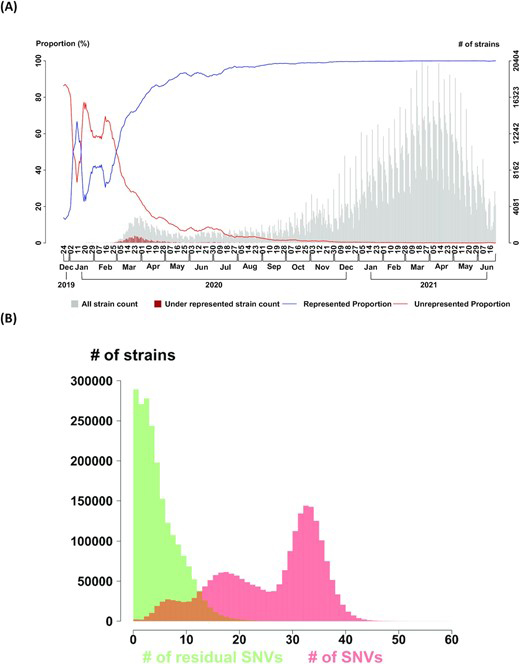
 中央研究院 生物化學研究所
中央研究院 生物化學研究所
SARS-CoV-2 continues to evolve, causing waves of the pandemic. Up to May 2022, 10 million genome sequences have accumulated, which are classified into five major variants of concern. With the growing number of sequenced genomes, analysis of the big dataset has become increasingly challenging. Here we developed systematic approaches based on sets of correlated single nucleotide variations (SNVs) for comprehensive subtyping and pattern recognition of transmission dynamics. The approach outperformed single-SNV and spike-centric scans. Moreover, the derived subtypes elucidate the relationship of signature SNVs and transmission dynamics. We found that different subtypes of the same variant, including Delta and Omicron exhibited distinct temporal trajectories. For example, some Delta and Omicron subtypes did not spread rapidly, while others did. We identified sets of characteristic SNVs that appeared to enhance transmission or decrease efficacy of antibodies for some subtypes. We also identified a set of SNVs that appeared to suppress transmission or increase viral sensitivity to antibodies. For the Omicron variant, the dominant type in the world, we identified the subtypes with enhanced and suppressed transmission in an analysis of eight million genomes as of March 2022 and further confirmed the findings in a later analysis of ten million genomes as of May 2022. While the "enhancer" SNVs exhibited an enriched presence on the spike protein, the "suppressor" SNVs are mainly elsewhere. Disruption of the SNV correlation largely destroyed the enhancer-suppressor phenomena. These results suggest the importance of fine subtyping of variants, and point to potential complex interactions among SNVs.
